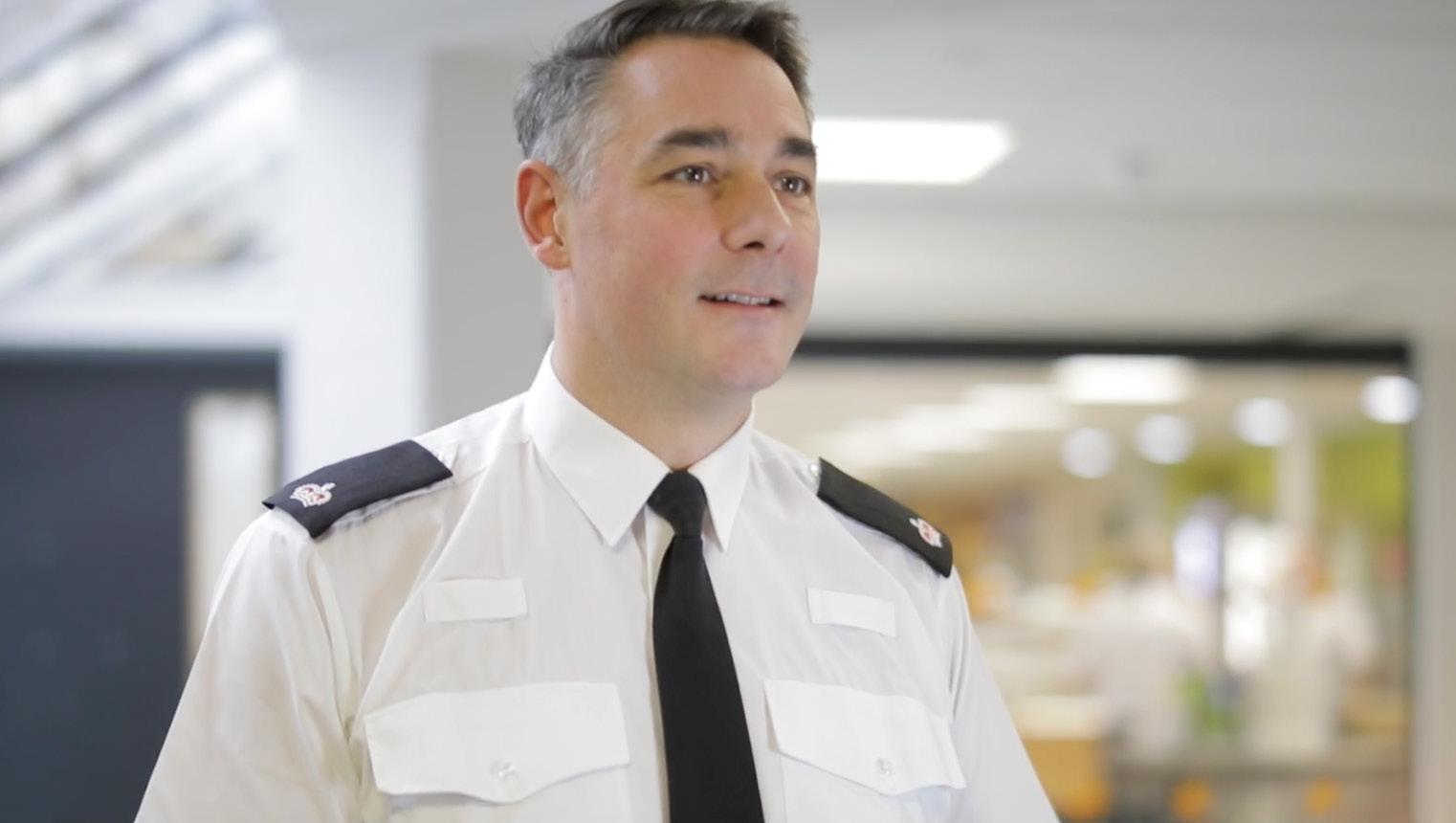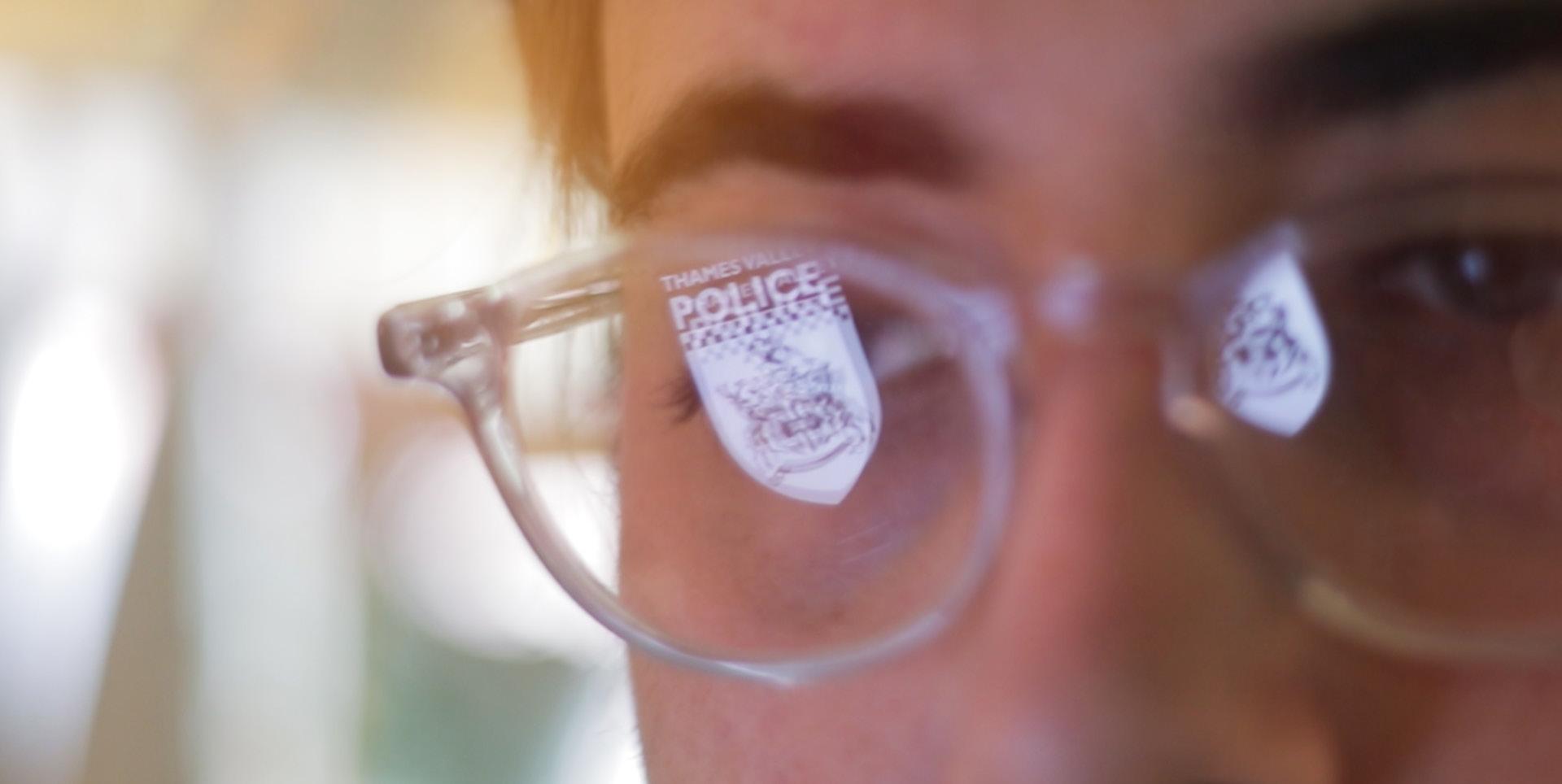A FORCE FOR AUTOMATION
IN PARTNERSHIP WITH


IN PARTNERSHIP WITH

Thames Valley Police’s digital transformation programme includes a pioneering approach to automation. Focused on frontline policing rather than back-office tasks, its already producing remarkable results.
AUTHOR: Ben East


If you want to understand the sheer size of the challenge facing policing in Britain in 2023, it’s worth spending five minutes with Mike Lattanzio.

“It’s volume of demand,” he says. “Emergency calls are up over 23 percent in the last 12 months. The complexity of crime and the systems we have to navigate increases the time taken to deal with each job.”
Lattanzio is Chief Information Officer for Thames Valley Police, the largest non-metropolitan police force in England and Wales, which serves a swathe of territory covering three counties to the west of London. The force shares its technology resources and infrastructure with the neighbouring Hampshire and Isle of Wight Constabulary, extending Lattanzio’s remit all the way down to the
south coast. Tech For Good meets him and his team at offices in Eastleigh, just outside Southampton. It’s a hive of operational activity and home to trailblazing IT innovation that is helping the force – and perhaps the rest of the nation – meet its immense challenges.
Superintendent Rob Brind is part of the team. As Digital Silver (a senior officer in the force’s Gold-Silver-Bronze command hierarchy), he helps oversee digital transformation and innovation across both forces.
“Crime is now more complex than ever before. Our crime investigation and management unit have been inundated with an increase in the number of crimes that they needed to process. Criminals use technology to commit crime in innovative ways, and we need to maintain pace with that,” he says.
“We are working to use Robotic Process Automation – or RPA – as a good option for us to free time for officers and staff so they can focus more on investigations.”
The picture of overstretched police forces is one painted across the entire country. In proactively deploying RPA at the sharp end of policing, Lattanzio’s team has demonstrated it is a technology that can quickly and cost-effectively provide solutions.
While RPA has already been used by police forces across the country to automate processes perceived as lower risk, Thames Valley Police has been more ambitious. It saw the potential for a series
of applications that could not only make an instant difference to the way policing operates in the third decade of the 21st century, but the kind of service the public could expect to experience, too.
“We made a conscious decision to look at how we could benefit frontline policing through automation,” says Lattanzio. “And it wasn’t about automating or digitising an analogue process. It was about looking at that process and potentially reengineering it to work in a much smarter way.”
Thames Valley Police began proofof-value work with Deloitte in 2020, the partnership highlighting where the opportunities for automation were, but also


At the end of the day, policing is about peopleand it’s about implementing technology that best looks after them”
Mike Lattanzi
pinpointing the best platform to meet their requirements.
“Policing uses a lot of very specific tools,” says Tom Kempster, Thames Valley Police’s Head of Innovation Technology. “We have quite a wide and diverse application stack, more so than is typical in private enterprise, so the opportunities for automation were massive.”
Which is where SS&C Blue Prism came in. The Warrington, UK-headquartered multinational is the original pioneer of RPA and has developed vast public-sector experience over more than two decades.
“Blue Prism really understood the outcomes we were trying to derive from automation, right from the outset,” explains Kempster. “We didn’t come into it initially looking for financial savings, it was very much about being able to bridge that gap between capacity and demand. There was a collaborative approach to understanding that problem and delivering service improvement.”
One of the most immediate impacts was in Thames Valley Police’s component of the region’s Multi Agency Safeguarding Hub (MASH). This critical service exists to link a multitude of agencies together to protect children and adults at risk of abuse and neglect.
As Head of MASH, Charlotte Donahoe explains, the workload is immense.
“We are handling 14,000 tasks every month - triaging that amount of work was
taking up a huge proportion of our officers’ time, taking them away from other important work.”
RPA now works across a plurality of systems to respond to triggers and carry out much of the administrative burden automatically, from intelligently researching signals that indicate a risk may exist for a child, to notifying the schools and agencies that need to know. It is returning thousands of hours to the force’s staff.
Donohoe adds: “What’s really exciting is that we’re now using RPA to help identify repeat perpetrators, particularly around domestic abuse, helping us prevent future harm.”
As Lattanzio puts it, people come into policing to keep the public safe, not to do endless paperwork. “Our responsibility is to make that as easy and as quick as possible, so they release more of their time to focus on the things that matter, which is people,” he says.
In MASH, that meant designing a system using four robotic processes where the data regarding an individual or incident could immediately be analysed and risk assessed. In a manual process, Lattanzio reveals, it can take longer for a high-risk case to be identified and prioritised.
“RPA can automate that data comparison, do some of that risk assessment and draw out items that need to go to the top of the queue.” he says.

“Blue Prism really understood the outcomes we were trying to derive from automation, right from the outset”
Tom Kempster
“This is really, really important, because we’re talking about vulnerable victims. The quicker we are cutting through to those really high-risk cases, that will stop people coming to harm, or even save lives.”
Donohoe reckons those at highest risk of harm are now being targeted for support within an hour of the trigger arriving in MASH. And there have been other benefits, too.
“The MASH is a really good example of where we’re able to triage information coming in through the use of automation,” adds Kempster. “It takes us to a position where we’re better prioritising risk, we’re making faster and better decisions based on quality data. We are seeing the daily positive impact of RPA on our staff and citizens we serve, because the process directly offers them a better police service.”

Robotic Process Automation (RPA) in the public sector is solving challenges that didn’t exist prior to COVID-19. Moving toward a long-term solution, agencies are utilizing intelligent automation as they build solid foundations for future success.
“MASH (Multi Agency Safeguarding Hub) is a really good example of where we’re able to triage information coming in through the use of automation. This means that something very high priority may have been sitting waiting until someone could have got to it, but we’re getting to those things faster than we ever did before”
Tom Kempster Head of Innovation Technology, Thames Valley PoliceAutomated “transactional tasking”, as Brind puts it, is being repeated across Thames Valley Police. In fact, he jokes, as soon as one department sees the benefits of RPA, another lobbies for its own digital workers: “It’s like a runaway train; we’re inundated with ideas for RPA.”
Thames Valley’s crime investigation and management unit saw its outstanding tasks reduced to zero with RPA, immediately saw improved data quality, and was therefore able to make better decisions.


“It’s a no brainer for us,” adds Brind. “We’ve released time for officers and staff to do other tasks and we can focus them to be in the right place at the right time. We’ve saved money and we’re delivering a much better service to the public”.
As far as the public is concerned, a salient impact of RPA is in how it streamlines people’s direct interactions with police.
Kempster says: “With RPA we can set protocols and initiate processes when a call is made. Through pre-determined rule sets we can send out communications, provide updates, give advice and prioritise risk. We can start really biting away at the volumes of demand that are coming through into the contact centre.”
Lattanzio isn’t alone in believing that one of the main reasons RPA has been so successful at Thames Valley Police is that the focus is on resource release and service improvement, rather than

We have a capability now that gives us the headspace to bring in policing transformation”
Tom Kempster
budgetary savings. Not least because that’s meant force-wide buy-in on what they’re trying to achieve.
“It’s never been a cost-saving exercise for our department,” says Donohoe. “It was around working more smartly. It was
around prioritising risks and implementing some standardised processes across the force.”

Kempster says RPA is now saving the force as much time in filing as would have previously required 50 full-time

employees. That’s 390,000 hours a year that can be better spent on the streets doing vital work with the public.
Thames Valley Police’s digital transformation strategy has made it the leader in frontline policing automations - which begs the question, when and how can the benefits be realised nationwide?

“I think there’s a perception out there that this is really expensive technology, or really difficult to set up,” says Lattanzio. “But it’s a lot less challenging than we anticipated.
My advice to other forces would be to start small, prove it works, gain momentum, and then gain support for further investment. That’s exactly what we did.”
He adds that the work Thames Valley has carried out already can now be lifted out, tweaked, and deployed at other forces. “We’re not competing with other forces; we can build a national portfolio in collaboration,” he adds.
Kempster is just as enthusiastic about sharing the force’s gains: “We were seeing benefits within six months, so my message to other forces is that this doesn’t have to

RPA is a no brainer for us. We’ve saved money and we’re delivering a much better service to the public”
Rob Brind
be a complicated or long journey. We’ve done a lot of that complexity for them.
The next step for Thames Valley – and other forces on the same journey – will be AI, says Kempster.
“We’re at the start of a journey. We have a capability now that gives us the headspace to bring in policing transformation. We want to be able to augment this by having controls over data coming in, creating more trigger points for efficient automation.
“And then what can we do with this data? This leads us nicely into AI, where we can make efficient decisions where it is safe and ethical to do so.”
Lattanzio has a simple example of how AI could help the forces of the future.
“Think about an environment whereby, actually, the officer doesn’t have to capture any information, because everything that victim is saying to the officer is being recorded via video.
“The AI captures that information in a structured manner. We still get what we need - but it completely changes the interaction between the officer and the victim. It means they can give them 100 percent focus, rather tapping away on a laptop or writing it down.
“It’s that sort of major digital transformation that forces should be setting themselves up for.
“At the end of the day, policing is about people - and it’s about implementing technology that best looks after them.”
